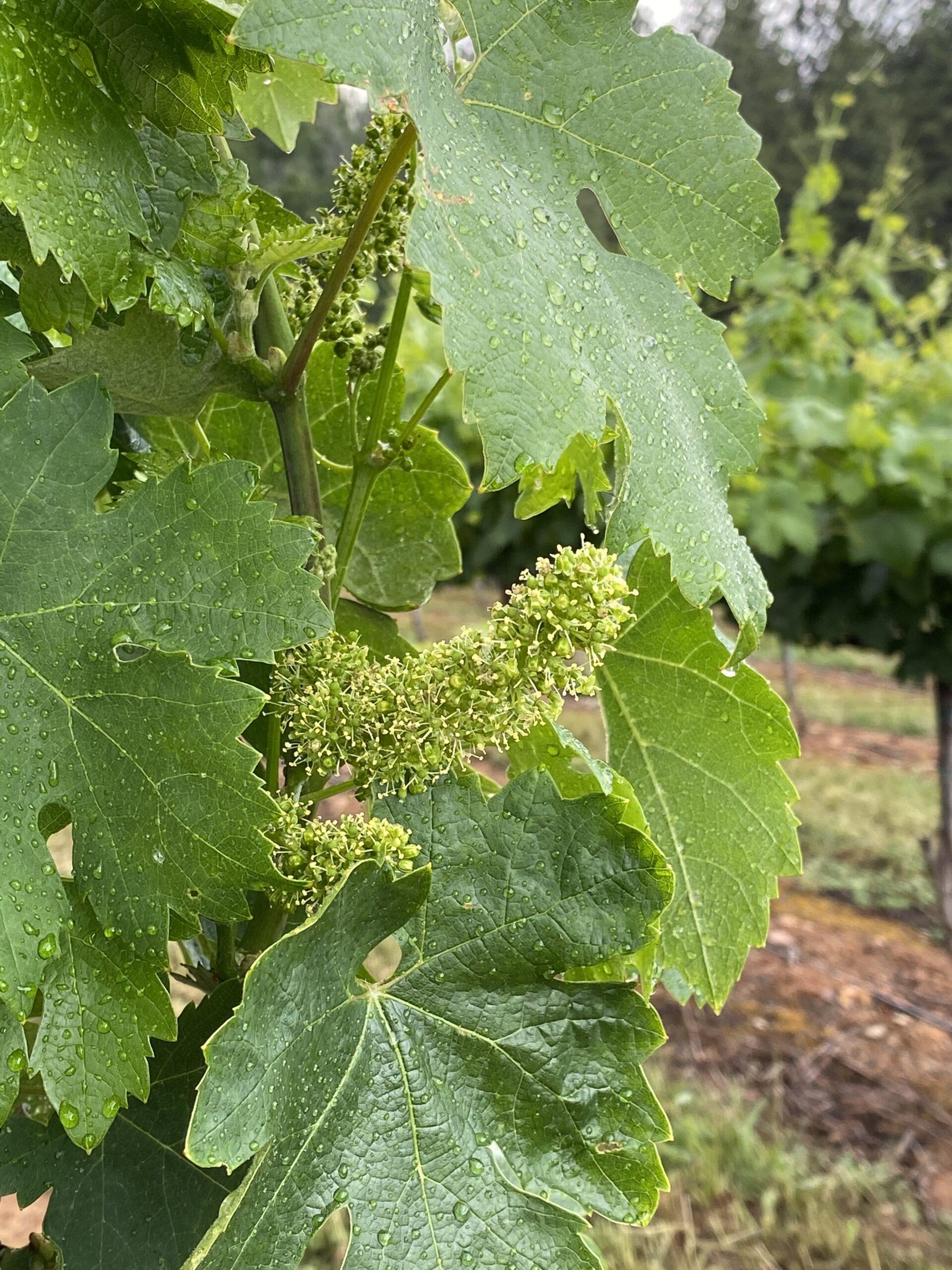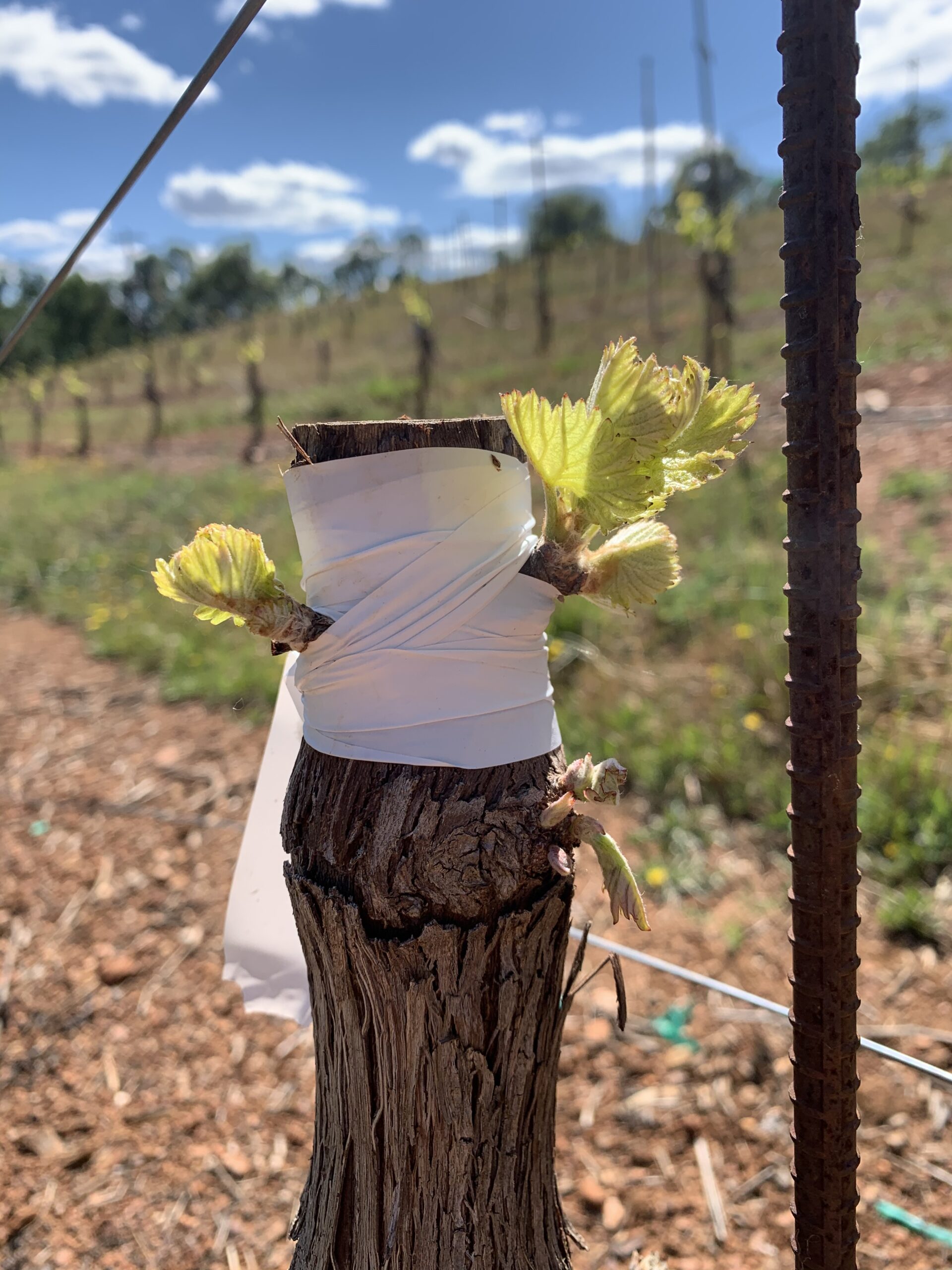Vineyard Milestones
Contributed by Eileen Javora Boeger
As the days are warming and daylight hours lengthening, the vineyards are bursting with growth. There are a couple of important milestones in mid to late spring that are key to a successful vintage. The first is bloom, which in our neck of the woods usually occurs about 2 months after the first buds appear. This is the time when pollination of the vine occurs, but unlike many other crops, vines are self-pollinators and do not need bees. Immediately following bloom, fruit set occurs. This is when the successfully pollinated flowers form seeds and berries, and it is perhaps the biggest indicator of how large a crop we can expect in the fall.

As seems to always be the case, weather can have a dramatic effect on the success of pollination and bloom. A single severe weather event, at just the right (or wrong?) time, can devastate a crop. Heavy rain, hail, and temperature extremes can interfere with pollination or make the vine react in such a way that even though a flower was pollinated it fails to form a berry. The result is a lower yield.
This year’s bloom went smoothly, whew! No hail or weather damage to stand in the way of a successful fruit set. We expect to have a decent crop come Autumn.

Once in a blue moon, we’d like to change the varietals in a vineyard and spring is the perfect time to do it. Rather than pull out the existing vines and replant, we often choose to graft, allowing an established vine to take on a new varietal. It’s really a magical thing! Here’s how it is done. The main trunk is cut off below the arms of the vine. Two notches are carved into the trunk on opposite sides an inch or two below the initial cut, and a dormant bud of a different varietal is inserted in the notch. The bud is then wrapped with a protective white tape to hold everything in place and “bandage the wound.” Within a few weeks a new vine should spring forth. Voila, the vine is now producing a different kind of grape! Grafting is less expensive than replanting and grapes can be harvested in the second year, compared to the third year for replants. However, the lifespan of a grafted vineyard is only as long as the years that were left on the original planting.
Lots of growing left to the season but so far it’s looking good!
